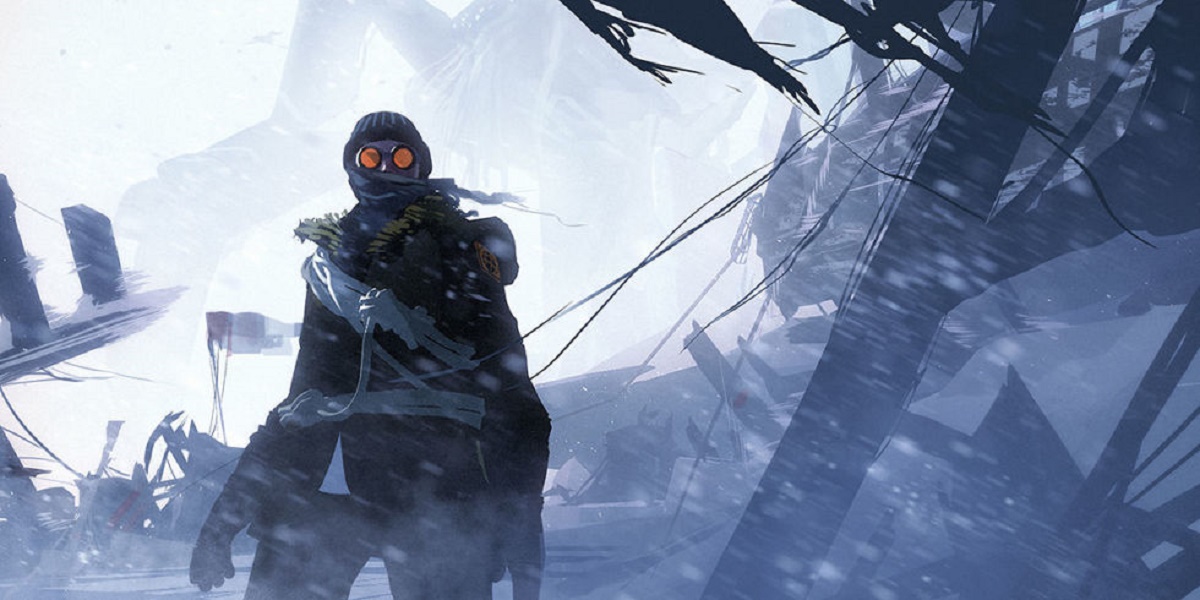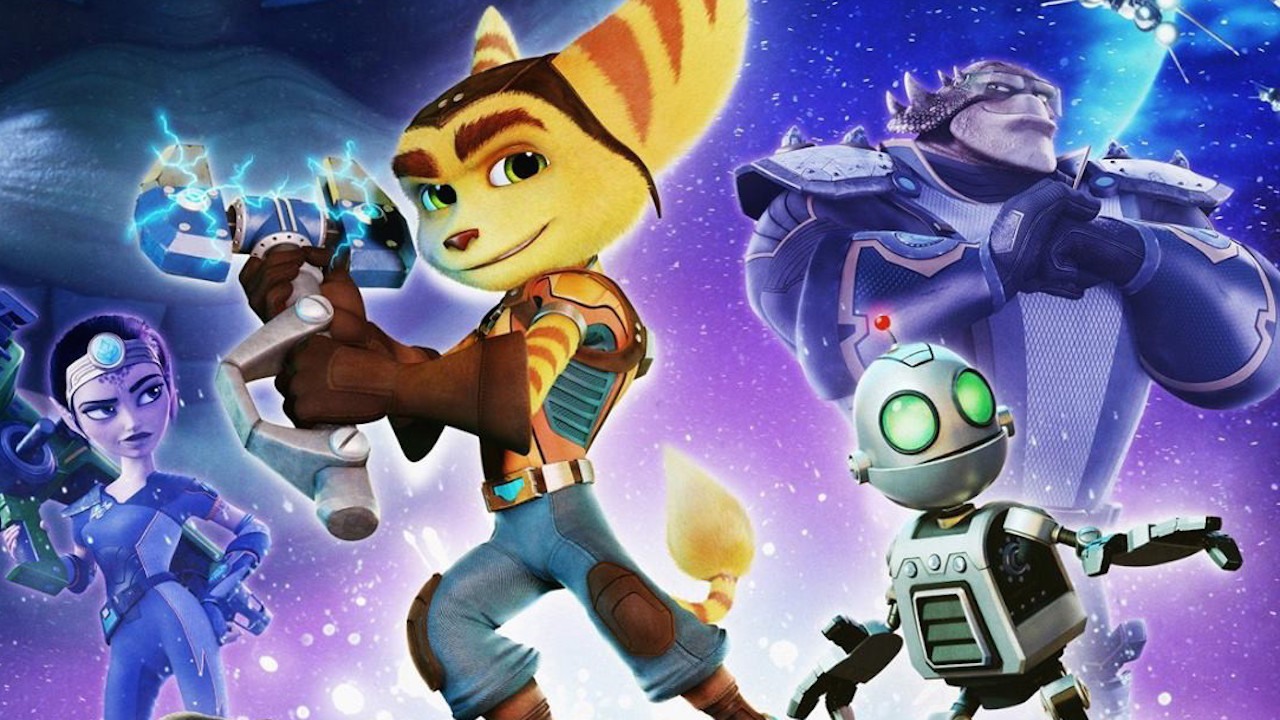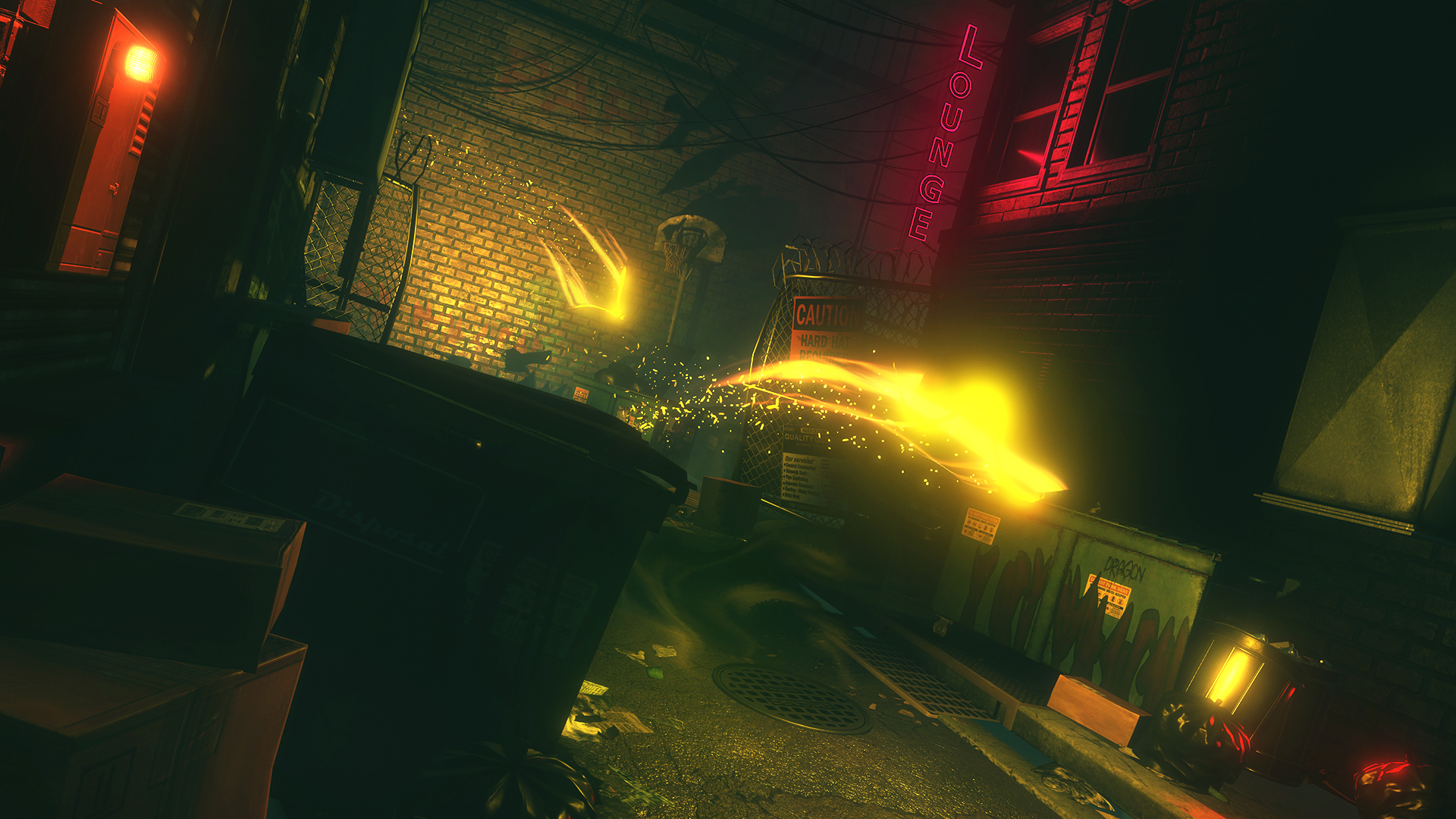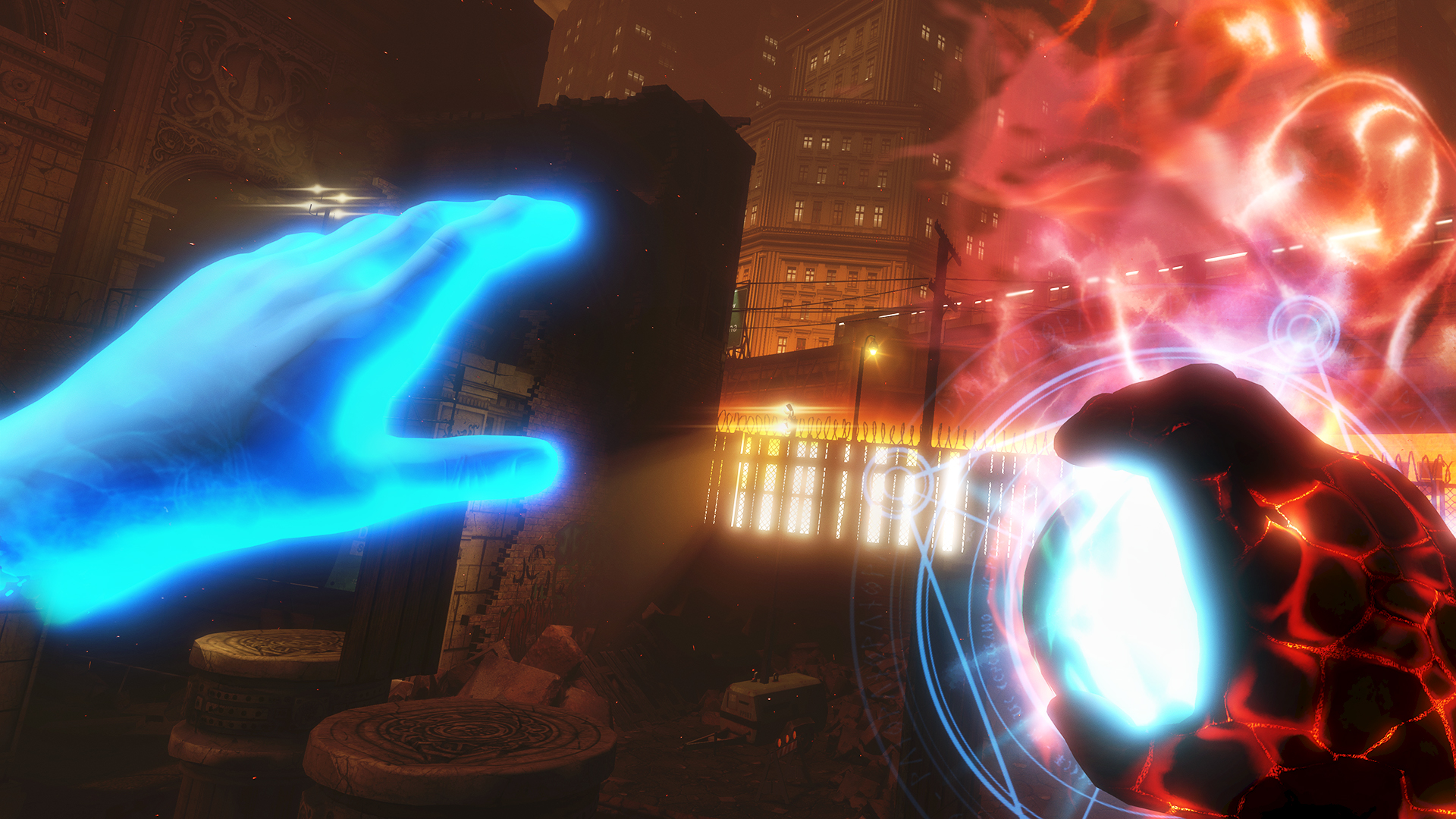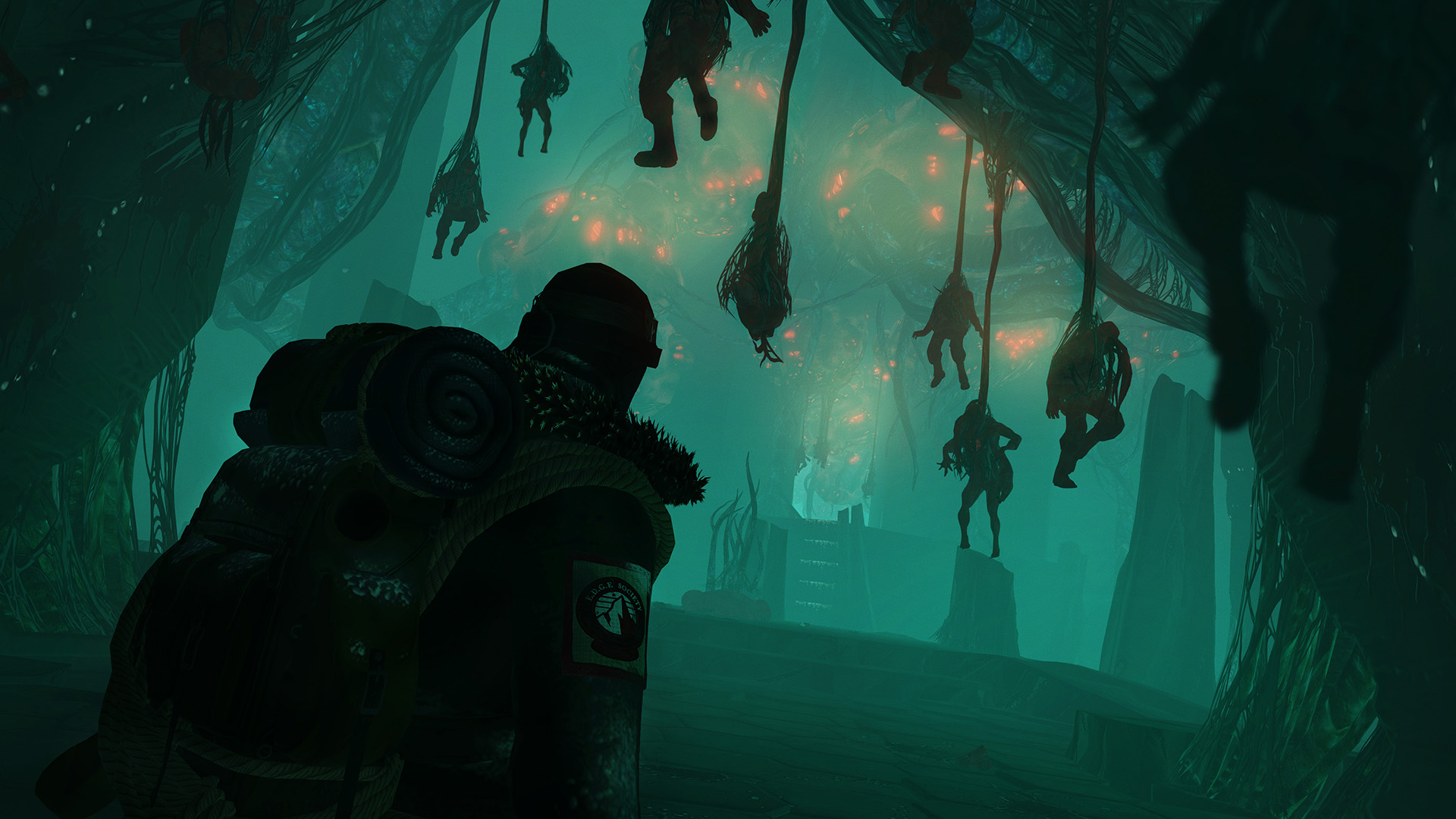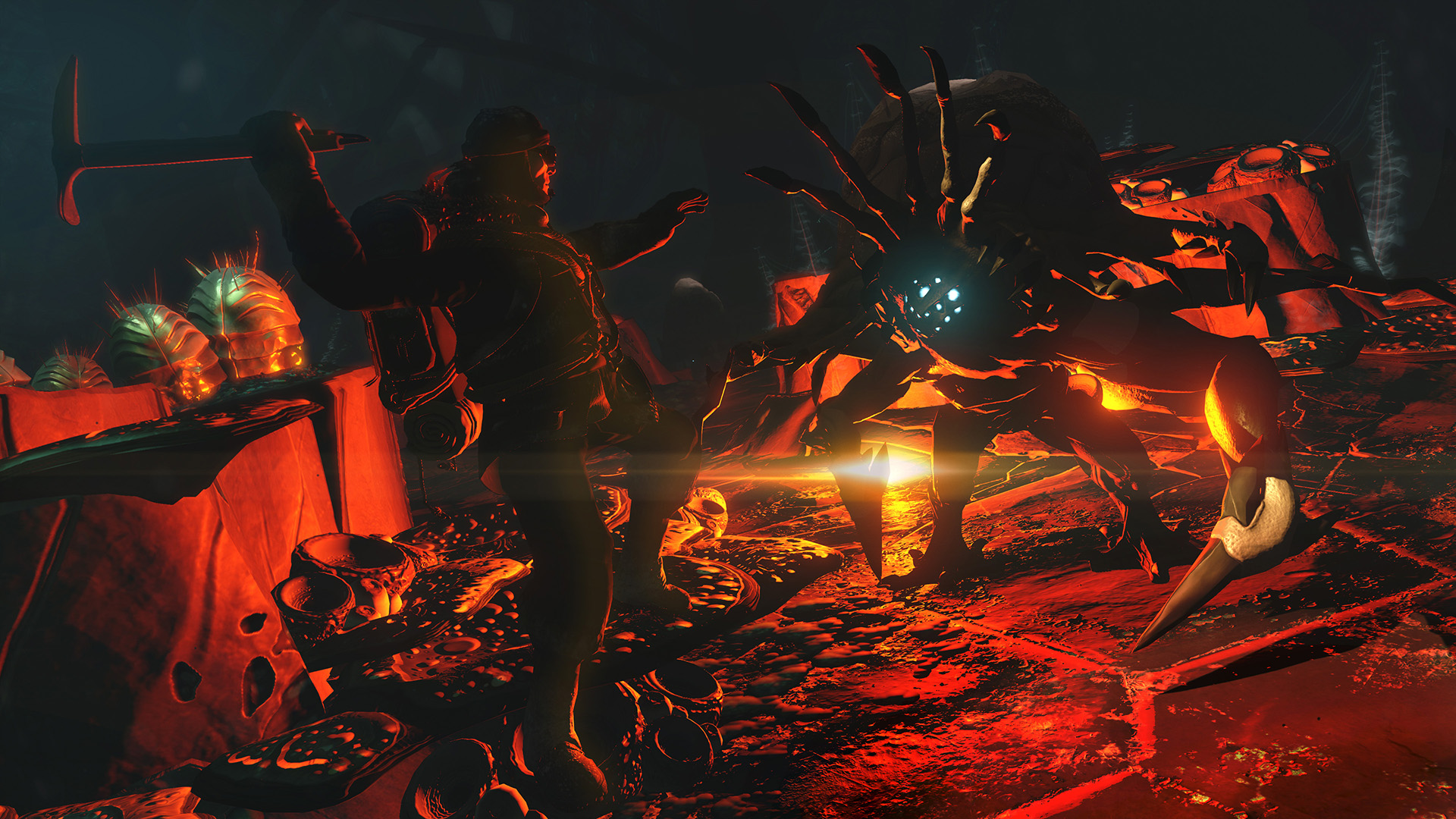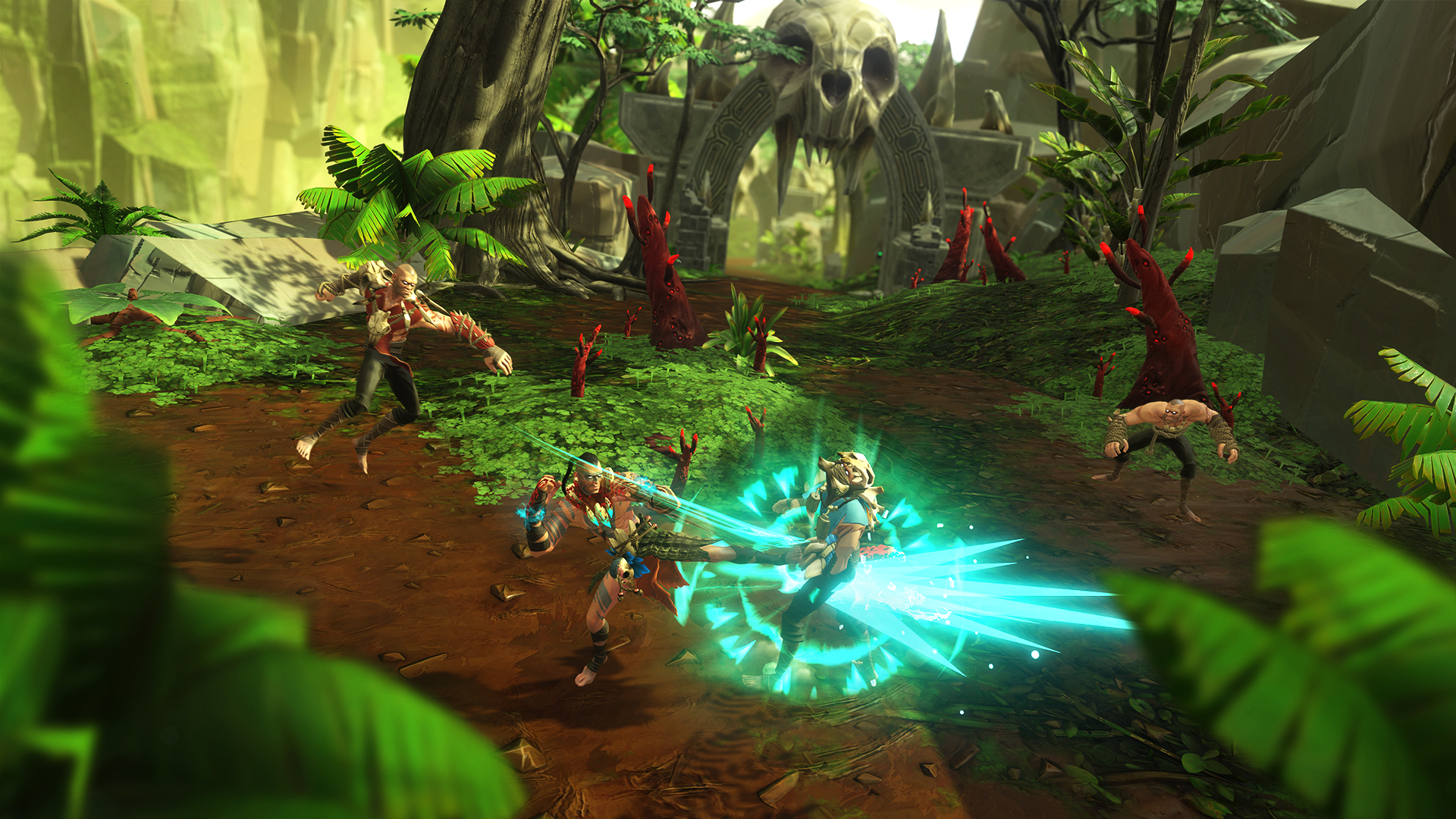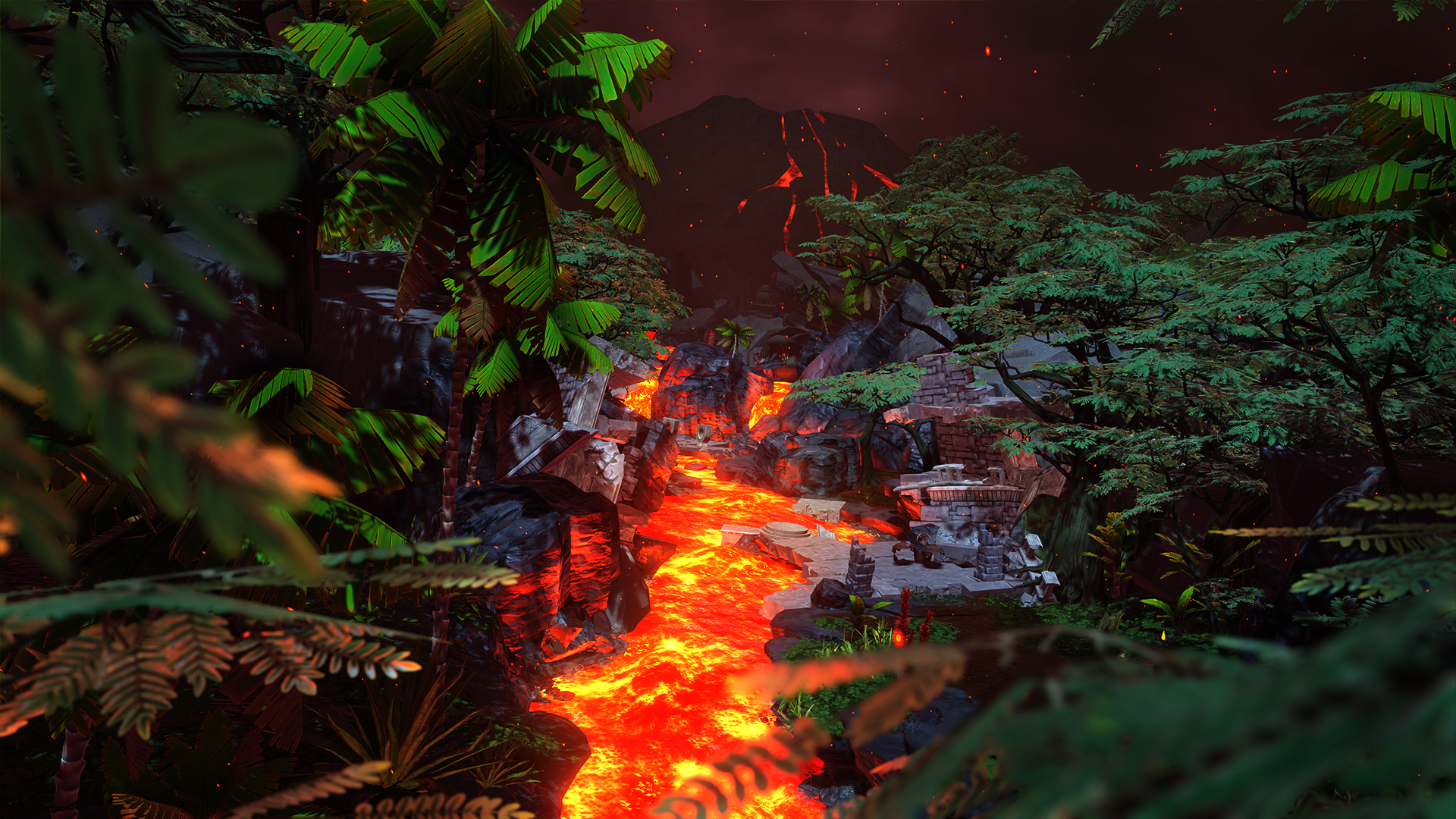In order for virtual reality gaming to really kick off it needs some of the best game makers around to support the new technology. Headsets, like the Oculus Rift, HTC Vive, and PlayStation VR, won’t have a chance to succeed without the support of developers that are willing to take risks and fail early on in VR’s life cycle. Software sells hardware. No matter how impressive and captivating playing in a VR headset might be, consumers still need to be convinced that this isn’t just another lousy gimmick; that maybe, just maybe, VR is the future of entertainment. It’s a good thing that a prolific studio like Insomniac Games is doing a lot of that convincing.
The longtime Ratchet & Clank developer has released one of the Oculus Rift’s best games in Edge of Nowhere, and it’s already busy working on a few other VR titles. There’s plenty of experimentation going on from the studio, with some grand ideas expertly being pulled off. Edge of Nowhere isn’t just a tech demo or an hour-long experience, but rather it’s a fully-fledged game. Though VR development is still definitely riddled with fear and a slew of challenges for Insomniac, it isn’t planning on slowing down its support for this new technology.
Insomniac’s First Love For VR
“Even though our industry is constantly evolving, there aren’t a lot of groundbreaking moments, and when there are, most of us don’t even realize how groundbreaking those moments are at the time,” said Ted Price, CEO and founder of Insomniac Games. “With VR we saw an opportunity to lead early in what we believe is just the start of a new wave of immersive entertainment. It’s risky, yes. But so is every new adventure.”
Insomniac has been making games for over 20 years now. Spyro the Dragon is one of PlayStation 1’s best 3D platformers, and the Ratchet & Clank series has been going strong for the better part of a decade. The studio’s portfolio is varied, from somber first-person shooters like Resistance, to the bombastic and colorful Sunset Overdrive. Insomniac has been able to continually engross players in their quirky and captivating worlds and stories. What most drew the studio to VR was the opportunity to keep doing that on a much larger scale.
“The word ‘presence’ has been used a lot recently yet there’s a reason for it,” said Price. “When you put on a VR headset, you really do feel like you’re ‘in’ the game world. In Edge of Nowhere, when you’re clinging to an icy face, listening to the wind rush by, peering down hundreds of feet to a rocky doom, you’re there. In general, convincing players that they’re in our worlds is something we’ve been trying to do for 22 years. With VR, we’ve gotten a hell of a lot closer.”
Insomniac wasn’t behind VR right off the gate. The studio needed some convincing before its developers even began to think about making games for a headset. There were doubts, but Oculus’ DK1 was that “aha” moment for some.
“I remember being skeptical of VR about 2 ½ years ago,” said Price. “I tried a DK1 at DICE and suddenly I realized how far the technology had come. Even at that early stage it was pretty easy to see how VR could change the game experience. But it wasn’t just me. We had several enthusiasts who were already experimenting with VR via the DK1 and were very excited about being part of the first wave of VR developers.
“Then when we began talking to Oculus and learned more about their plans and our creative opportunities, most of us here were ready to move ahead even if the rest of the industry wasn’t. It definitely took some faith on our part.”
The Challenges Of VR Development
Edge of Nowhere is Insomniac’s first VR effort and is a third-person horror game that takes place in a snowy setting. The studio is following it up with another Oculus-exclusive called Feral Rites, a vibrant brawler that lets you explore a jungle island and transform into giant beast-people. It also recently announced The Unspoken, an Oculus Touch-enabled online action title that has you chucking spells at other players in first-person. It’s a cross between an arena shooter and a fighting game, and the camera focuses heavily on your hands. In our hands-on from back in April, we referred to The Unspoken as an “urban magic fight club” for good reason.
All three games make full use of VR technology disparately, but they all are equally challenging to make. When Insomniac works on regular console games it always starts with established conventions for controls and cameras.
“Most of us here were ready to move ahead even if the rest of the industry wasn’t.” – Ted Price, CEO and Founder of Insomniac Games
The studio knows that in a game like Ratchet & Clank you control the hero with the left stick and the camera with the right stick. Developers spent little time refining these conventions. Since Insomniac has a well-understood playbook for console experiences, it spends most of production working on presentation and experimenting with core mechanics.
However, VR development is completely different as the conventions haven’t been established. The studio ends up making guesses about camera behavior, and then tests those guesses with trial-and-error. Every experience needs to feel comfortable for every type of player, otherwise Insomniac risks making the user feel dizzy and nauseous.
“For all three of our current VR games, the genre and core mechanics drove the camera style,” said Chad Dezern, Creative Director on The Unspoken. “Edge of Nowhere uses a third-person camera that follows Victor Howard at a constant distance. Feral Rites has a third-person camera that cuts between fixed positions to retain freedom of movement for exploration. The Unspoken uses a first-person camera to keep the focus on the player’s hands and the opponent.
“We arrived at each one of these schemes through painstaking experimentation. At one point during preproduction for The Unspoken, we attached movement to a projectile you could shoot out of your eyeballs. This turned out to be a magic recipe for nausea. But the good news is that, after all of that, the games feel very comfortable to play. And each camera is symbiotically attached to the game style. Hopefully we’re writing a new playbook.”
A Lovecraftian Tale In VR
Insomniac does however have experience making its players feel frightened — albeit not quite nauseous. Throughout the Resistance trilogy the studio expertly builds tension with clever level design and frightening enemies. The series is known for its haunting atmosphere and a depressing, ravaged world. Once the studio began believing in VR, it immediately wanted to start making a horror game. Once you put on a VR headset you start solely relying on the game for what you see and hear. You’re completely blocked off from reality.
This allows game makers to pull off some truly frightening gaming experiences in VR, and that’s exactly what Insomniac wanted to make. Building tension with spatial audio, while a few creatures lurk around outside the player’s peripheral vision was too enticing for the studio not to do. Insomniac arrived with Edge of Nowhere by doing some extensive research.
Read More: Edge of Nowhere Written Review + Video Review
“We started doing research on horror and H.P. Lovecraft’s works immediately became a popular topic for the team,” said Brian Allgeier, Creative Director on Edge of Nowhere. “After discussing the novella, At the Mountains of Madness, it became clear to us that this tragic story of Antarctic explorers was the perfect inspiration for our game which at the time was a gray box prototype featuring a mix of action-adventure and horror elements.”
At the Mountains of Madness’ plot details the disastrous events of an Antarctic expedition, and the terrors a group of explorers discover during their tumultuous journey. While Lovecraft’s frightening novella is a story Insomniac wanted to explore, it knew the harsh snowy setting would help solve a slew of technical issues.
“Since Oculus games are required to run at 90 frames per second — 3 times faster than the standard framerate — we needed to be more diligent on how we optimized our graphics,” said Allgeier. “The Antarctic setting gave us more control on where to focus our visual details. We could add darkness or bring in the fog to hit a crisp framerate. This allowed us to put more visual fidelity into our hero, nearby environmental elements, and the hideous unsettling monsters that are key to striking that creepy Lovecraftian tone.”
The Oculus Rift makes Edge of Nowhere a much more terrifying experience than if it were played on a console. Throughout the game you’re forced to conquer towering heights while climbing ice walls. You’ll feel scared to let go as you might start fearing for your life. Ghastly creatures lurk inside dark caves that you’ve to explore, and combating them with an axe will result in speckles of virtual blood spraying on your VR goggles. You constantly feel like you’re actually stuck in this dreadful world.
“In terms of mechanics, we’re fully utilizing head tracking for aiming the shotgun, directing the flashlight, and throwing rocks to distract creatures,” said Allgeier. “Many players have become accustomed to moving their camera view with the right stick. In Edge of Nowhere people quickly default to the natural aim mode we were all born with: turning the head and looking! As a result the feeling of immersion is enhanced. Players are encouraged to look when they find puddles on the ground, see that something above is dripping, and realize there’s a creature hanging on the ceiling waiting in ambush.”
Making A Jungle Come To Life
Similarity with Feral Rites, Insomniac wanted to build a world that players could get lost in. While it certainly isn’t as lonely and harrowing as Edge of Nowhere, Feral Rites, still makes use of VR in some clever ways of its own. The focus for the open-world brawler is making players feel immersed in the game’s jungle setting, Stonefang Island.
In contrast to Edge of Nowhere snowy environments, Feral Rites sports dank catacombs, volcanos and volcanic rocks that fly past you, and plenty of green foliage. Insomniac spent time making sure players knew exactly where they were looking, and nailing the camera is still an ongoing obstacle.
Read More: Hands-On – Feral Rites is a Surprisingly Bloody Brawler
“The biggest challenge for us when developing Feral Rites early on was how do you make a camera system that will work for more open-world spaces without causing simulation sickness,” said Marcus Smith, creative director on Feral Rites. “A traditional follow cam — like those used in third-person action and adventure games — causes distress in many users because of the constant movement. We experienced this ourselves when the Edge of Nowhere team was doing early camera tests.
“Creating camera systems for VR is tricky for two reasons. The first is that every player will respond differently when experiencing VR. The second thing is actually also a blessing: it’s still early in the art form’s life, so no one has the answers yet. This is tricky because you don’t have any examples to pull from, but also exciting because we feel like we’re blazing a new trail.”
Insomniac is solving problems with camera angles by making players’ head movements an integral part of gameplay.
“For Feral we have several game mechanics that make use of the Oculus RIft’s head tracking function,” said Smith. “By moving your head you can target mortar firing, and search for hidden objects in the world that are only activated via a ‘look at’ icon. But we also do little things like activating wildlife when the player looks at them; such as perched birds fly away when you look towards them for example.”
The Platform of the Future
Since the studio is still busy working on Feral Rites, it hasn’t shared all of the details regarding the game’s mechanics. But the developer is still only scratching the surface when it comes to discovering new ways to play VR games. When asked whether Insomniac would ever consider making a Ratchet & Clank or Resistance VR game, Chad Dezern said the only that’ll happen is if the studio finds a way to successfully transfer these franchises over to VR without taking away their soul. But it’s enticing for Dezern to think about what it might feel like using Ratchet’s trusty Swingshot in VR.
“How does it feel to look out over a wide-open planetscape, the entire universe stretching out before you? That one I can answer: that’s pretty much how it feels to develop VR games right now.”
—
Alex Gilyadov is a freelance writer with work appearing in multiple publications, such as GameSpot, VICE, Playboy, Polygon, and more. You can follow him on Twitter: @rparampampam.
Featured Image: “Insomniac Games Wallpaper 6-6” by scot12330


